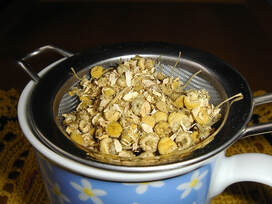 That means all chamomile (Roman, German, and Maroc) in all forms (essential oil, herbal supplements, etc.) Please don't shoot the messenger! Be mad at ragweed and chamomile for being related. Ragweed and chamomile are both members of the Asteraceae/Compositae plant family. The plant family also includes chrysanthemums, marigolds, daisies, echinacea, and dandelions. YEP - echinacea and dandelions too! Clinical research has documented that that ragweed allergy sufferers have tendency to be allergic to chamomile as well. So, if you are allergic to ragweed and that chamomile tea you've been drinking or chamomile essential oil you've been diffusing:
It's unfortunate that this wonder herb called chamomile may not be the go-to for ragweed allergy sufferers. But, fear not! There are other herbs or essential oils that can provide the benefits you are seeking from chamomile:
See! There is still hope for ragweed allergy sufferers to reap the rewards of teas, essential oils, and supplements in a world where chamomile exists. Just remember to read the labels of those essential oil bottles and tea boxes before you buy! If the labels use the Latin names: Roman Chamomile = Anthemis nobilis German Chamomile = Matricaria recutita Maroc Chamomile = Ormenis multicaulis, O. mixta Enjoy being chamomile-free! Your ragweed allergy-suffering self will thank you for it. :-) #essentialoils #aromatherapy #tea #supplements #holisticmedicine #alternativemedicine #allergies #ragweedallergy #chamomile References:
1 Comment
|
AuthorKelly Nembhard is a certified health coach, Reiki therapist, crystal healer, and aromatherapist with experience as a clinical research professional and developmental biologist. She currently lives in Durham, NC. Archives
December 2023
Categories
All
Any medical information published on this website is not intended as a substitute for informed medical advice. You should not take any action before consulting with a healthcare professional.
|
|
© 2019-2023, My Wealth in Health. All rights reserved.
|
website designed by Kelly Nembhard
|



 RSS Feed
RSS Feed
